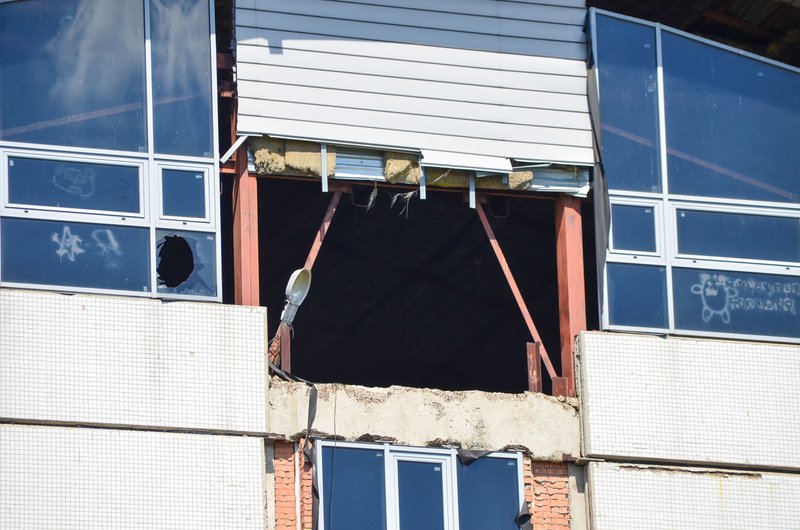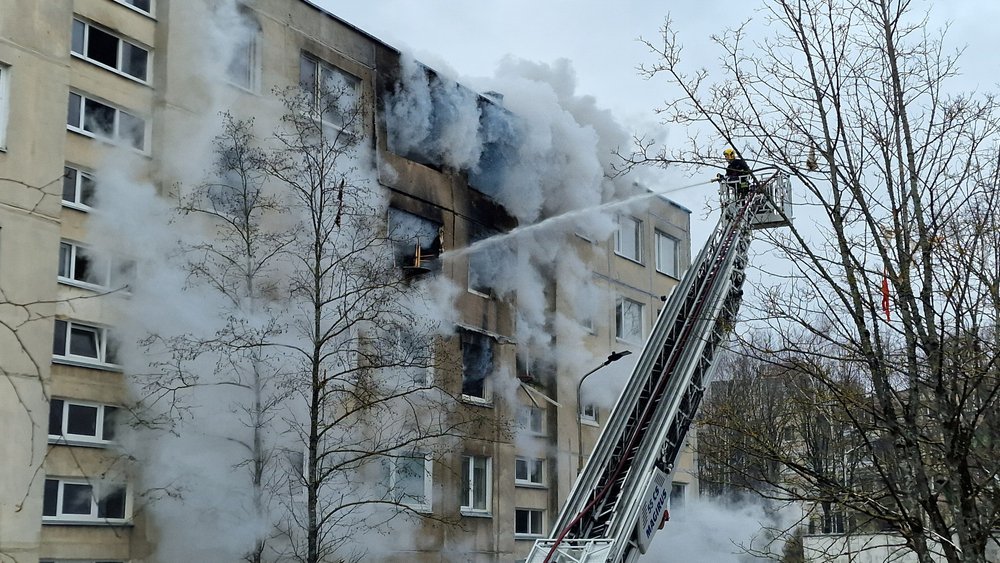When disaster hits a multi-tenant property—whether it’s an apartment complex, shopping center, office building, healthcare facility, or condo association—the result isn’t just physical destruction. It’s an administrative and financial maze filled with overlapping responsibilities, conflicting priorities, and endless insurance paperwork. Multi-tenant claims come with an added layer of difficulty: multiple stakeholders, shared structures, and diverse insurance coverage scenarios. Whether it’s water damage, fire, vandalism, or severe storm-related destruction, navigating these claims demands precision, coordination, and strategy.
Let’s break down how property managers, landlords, and facility administrators can manage these large-loss situations—from documentation and communication to negotiating with insurers and leveraging expert help to avoid being underpaid.
The Scope of Multi-Tenant Claims
At their core, multi-tenant claims are complex because they span multiple interests and insurance coverages. You’re not just filing a claim for one structure—you’re coordinating across commercial leases, residential units, shared amenities, and sometimes, business interruption insurance.
Some of the most common causes of large-loss events in multi-tenant properties include:
- Water Damage: Leaking pipes, appliance malfunctions, or failed HVAC systems often lead to microbial contamination, structural damage, and tenant displacement.
- Fire and Smoke Damage: Fires frequently destroy electrical systems, spread smoke through ventilation, and trigger sprinkler systems that add additional water damage.
- Wind, Hail, and Lightning: Storms can simultaneously impact multiple units, roofs, and electrical systems, requiring coordinated cleanup and repair across various insurance policies.
- Theft and Vandalism: Especially in commercial or mixed-use buildings, these incidents raise questions around security failures, tenant liability, and shared coverage.
Multi-tenant properties often feature layers of insurance, including master policies, tenant improvements and betterments coverage, business personal property (BPP), and business income loss. Coordinating all these moving parts is the crux of an effective claim strategy.

Why Insurance Carriers Struggle (or Refuse) to Handle Multi-Tenant Claims Properly
It’s no secret in the industry: insurance carriers often operate with a bottom-line mentality. According to the Florida OPPAGA report, carriers systematically undervalue claims to protect their profitability.
In the case of multi-tenant claims, that underpayment becomes amplified because:
- Multiple claims (from tenants and owners) create more liability exposure
- Adjusters may try to “compartmentalize” or minimize shared damage
- Tenant improvements and code upgrades are often overlooked or excluded
- Coordination between carriers (if tenants have renters’ or business policies) leads to finger-pointing and stall tactics
Without aggressive advocacy, building owners and managers are often stuck between angry tenants and an uncooperative insurance company.
The Policyholder’s Burden: Your Responsibilities After a Loss
Most policyholders don’t realize that their insurance policies come with significant obligations following a loss. This includes:
- Prompt Notification of Loss
- Protecting the Property from Further Damage
- Providing a Detailed Proof of Loss
- Documenting All Damages and Expenses
- Allowing Inspections and Carrier Access
Failure to meet these conditions gives carriers more leverage to reduce or deny payment. In a multi-tenant situation, the complexity makes it easier for insurers to argue that documentation is incomplete or untimely.
This is where a public adjuster becomes invaluable. As first-party property damage adjusters, public adjusters work on your behalf—not the carrier’s—to meet all policy requirements and maximize your recovery.
Effective Documentation Strategies for Multi-Tenant Claims
The more organized and thorough your documentation is, the stronger your negotiating position. This isn’t just about protecting the structure—it’s about proving every impacted component across multiple units.
Key Documentation Tactics:
- Photographic Records: Capture high-resolution images of all damage in shared and private areas.
- Tenant Statements: Ask each tenant for written summaries of their losses and experiences.
- Certified Estimates: Secure bids from licensed and certified contractors (especially those recognized by the IICRC).
- Contents Inventories: For commercial tenants, document all affected BPP (Business Personal Property), especially electronics, machinery, and furniture.
- Loss of Use or Business Interruption Logs: Track revenue loss or operational downtime, especially for business tenants.
Keeping Tenants Informed and Engaged
Communication is everything when managing a multi-tenant property post-loss. Displaced tenants, disrupted businesses, and uncertainty can quickly erode trust. Clear communication helps manage expectations and reduce the risk of conflict.
Here’s how to structure your communications during a claim:
- Weekly Email Updates: Set expectations and report claim milestones.
- Designated Point of Contact: Have a specific liaison for tenant concerns.
- Shared Resource Hubs: Create a private webpage or app with FAQs, timelines, and important contacts.
- Community Briefings: Host monthly virtual meetings or town halls.
Transparency during the recovery phase creates goodwill and protects your brand’s reputation.
Reviewing Your Policy: Do You Know What You’re Covered For?
Before a loss happens—or immediately after—it’s critical to understand your insurance coverage. Many multi-tenant property managers are surprised to find exclusions for:
- Code upgrades
- Tenant improvements
- Water backup and seepage
- Microbial contamination
- Business interruption for common areas
Quoting Bill Wilson from When Words Collide: “The policy is the product.” Every word matters—and so does how you interpret it. A public adjuster can review your policy with you, identify coverage gaps, and ensure your claim complies with policy language.
Velocity Public Insurance Adjusters offers free policy reviews—a proactive move that can save thousands later.

Business Continuity and Liability Protection
For commercial and institutional buildings—think medical offices, retail centers, or multifamily complexes—business continuity is just as important as rebuilding. A slow claim not only affects repairs but may cause long-term financial loss due to tenant churn or unfulfilled lease obligations.
With proper planning and a claims partner that understands the nuances of multi-tenant claims, you can:
- Protect lease revenue
- Minimize tenant turnover
- Limit property devaluation
- Maintain operational integrity during recovery
Public Adjusters: Your First Line of Defense
The National Association of Public Insurance Adjusters (NAPIA) and the American Policyholder Association (APA) both emphasize that public adjusters level the playing field. Unlike carrier adjusters, public adjusters fight for the maximum legal entitlement of the policyholder. Key benefits of working with a public adjuster include:
- Policy Expertise: We break down technical language and coverage terms
- Carrier Negotiation: We challenge undervalued damage scopes and demand fair payouts
- Dispute Prevention: We manage communication and avoid claim missteps that could result in denials
- Claim Strategy: From mitigation through payout, we map the full recovery timeline
Take Control of Your Claim Before It Controls You
Managing multi-tenant claims is like conducting an orchestra—every part must come together in harmony. Between documentation, communication, policy navigation, and tenant support, it's too much to risk getting wrong. Let’s make sure your next claim doesn’t turn into your biggest liability. Schedule a call for a free claim and policy review today.
Claim Services We Provide
Velocity Public Insurance Adjusters handles a variety of claim types for both commercial and residential property losses: weather-related damage, theft and vandalism, fire and smoke damage.
Members of
Velocity Public Insurance Adjusters is a Certified Firm with the IICRC.
IICRC Certified Firms are known for their high level of technical experience and professionalism.
With the rapid increase in consumer calls due to the demand for mitigation and restoration projects,
Certified Firms are working in the field every day and have unmatched expertise in complex restoration projects.
Client testimonials
Don't take our word for it, see what our clients are saying about us.
Contact us
Schedule a free, no-obligation, claim and policy review. Every property claim is different, and we'd like the opportunity to provide you with an assessment of your unique situation.
- Indiana
- Kentucky
- Michigan
- Ohio
- Iowa
- Wisconsin
- South Carolina
Use of Information Purpose: We use your information to send mobile messages and respond to your inquiries as necessary. This may involve sharing your information with platform providers, phone companies, and other vendors who assist in message delivery.
Protection of Information: We do not sell, rent, loan, trade, lease, or otherwise transfer for profit any phone numbers or customer information collected through the SMS program to any third party.
Disclosure: We may disclose your information if required by law, regulation, or governmental request, to avoid liability, or to protect our rights or property.
Choices and Controls Consent: Consent to receive automated marketing text messages is not a condition of any service we provide.
Opt-Out: You can opt out of receiving further text messages via the Messaging Service by responding to any of our text messages with any of the following replies: STOP, END, CANCEL, UNSUBSCRIBE, or QUIT.
Your Responsibilities Accurate Information: Ensure that the information you provide is accurate, complete, and truthful. Do not use a false or misleading name or a name you are not authorized to use.
Consequences: If we believe the information provided is untrue, inaccurate, or incomplete, or if you have joined the program for ulterior motives, we may deny you access to the program.












